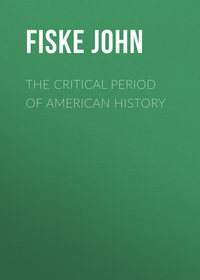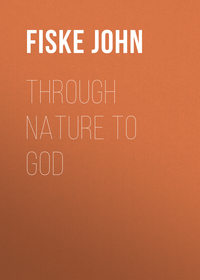 полная версия
полная версияA Century of Science, and Other Essays
Just where the line should be drawn between sanity and crankery is not always easy to determine, and must usually be left to soundness of judgment in each particular case, as with so many other questions of all grades, from the supreme court down to the kitchen. One of the most frequent traits of your crank is his megalomania, or self-magnification. His intellectual equipment is so slender that he cannot see wherein he is inferior to Descartes or Newton. Without enough knowledge to place him in the sixth form of a grammar school, he will assail the conclusions of the greatest minds the world has seen. His mood is belligerent; since people will not take him at his own valuation, he is apt to regard society as engaged in a conspiracy to ignore and belittle him. Of humour he is pretty sure to be destitute; an abounding sense of the ludicrous is one of the best safeguards of mental health, and even a slight endowment will usually nip and stunt the fungus growth of crankery.
The slightest glimmering sense of humour would have restrained that inveterate circle-squarer, James Smith, from publishing (in 1865) his pamphlet entitled "The British Association in Jeopardy, and Dr. Whewell, the Master of Trinity, in the Stocks without Hope of Escape." His case, with those of many other ingenious lunatics, was racily set forth by the late Professor De Morgan in his "Budget of Paradoxes" (London, 1872), a bulky book dealing with the author's personal experiences with cranks and their crotchets. It was De Morgan's lot as an eminent mathematician to be outrageously bored by circle-squarers and their kin, and it was a happy thought to put on record the queer things that happened. His friends asked him again and again why he took the trouble to mention and expose such absurdities. He replied that, when your crank publishes a book "full of figures which few readers can criticise, a great many people are staggered to this extent, that they imagine there must be the indefinite something in the mysterious all this. They are brought to the point of suspicion that the mathematicians ought not to treat all this with such undisguised contempt, at least. Now I have no fear for π; but I do think it possible that general opinion might in time demand that the crowd of circle-squarers, etc., should be admitted to the honours of opposition; and this would be a time-tax of five per cent. one man with another, upon those who are better employed." At any rate, continues De Morgan, with a twinkle in the corner of his eye, whether in chastising cranks he has any motive but public good "must be referred to those who can decide whether a missionary chooses his pursuit solely to convert the heathen." He confesses that perhaps he may have a little of the spirit of Colonel Quagg, whose principle of action was thus succinctly expressed: "I licks ye because I kin, and because I like, and because ye's critters that licks is good for!"
Among the creatures whose malady seemed to call for such drastic treatment was Captain Forman, R. N., who in 1833 wrote against the law of gravitation, and got not a word of notice. Then he wrote to Sir John Herschel and Lord Brougham, asking them to get his book reviewed in some of the quarterlies. Receiving no answer from these gentlemen, he addressed in one of the newspapers a card to Lord John Russell, inveighing against their "dishonest" behaviour. Still getting no satisfaction, the valorous captain wrote to the Royal Astronomical Society with a challenge to controversy. To this letter came a polite but brief answer, advising him to study the rudiments of mechanics. It was not in the paradoxer's nature to submit tamely to such treatment; and he replied in a printed pamphlet, wherein he called that learned society "craven dunghill cocks," and bestrewed them, with other choice flowers of rhetoric, much to the relief of his feelings.
One of this naval officer's fellow sufferers was a farm labourer, who took it into his head that the Lord Chancellor had offered £100,000 reward to any one who should square the circle. So Hodge went to work and squared it, and then hied him to London, blissfully dreaming of sudden wealth. Hearing that De Morgan was a great mathematician, he left his papers with him, including a letter to the Lord Chancellor, claiming the £100,000. De Morgan returned the papers with a note, saying that no such prize had ever been offered, and gently hinting that the worthy Hodge had not sufficient knowledge to see in what the problem consisted. This elicited from the rustic philosopher a long letter, from which I must quote a few sentences, so characteristic of the circle-squaring talent and temper: —
Doctor Morgan, Sir. Permit me to address you
Brute Creation may perhaps enjoy the faculty of beholding visible things with a more penitrating eye than ourselves. But Spiritual objects are as far out of their reach as though they had no being Nearest therefore to the brute Creation are those men who Suppose themselves to be so far governed by external objects as to believe nothing but what they See and feel And Can accomedate to their Shallow understanding and Imaginations
… When a Gentleman of your Standing in Society … Can not understand or Solve a problem That is explicitly explained by words and Letters and mathematacally operated by figuers He had best consult the wise proverd
Do that which thou Canst understand and Comprehend for thy good.
I would recommend that Such Gentleman Change his business
And appropriate his time and attention to a Sunday School to Learn what he Could and keep the Litle Children form durting their Close
With Sincere feelings of Gratitude for your weakness and Inability I am
Sir your Superior in Mathematics.
X. Y.A few days after this elegant epistle there came to De Morgan another from the same hand. Hodge had sent his papers to some easy-going American professor, whose reply must clearly have been too polite. It is never safe to give your crank an inch of comfort; it will straightway become an ell of assurance. This American savant, crows Rusticus, "highly approves of my work. And Says he will Insure me Reward in the States I write this that you may understand that I have knowledge of the unfair way that I am treated in my own nati County I am told and have reasons to believe that it is the Clergy that treat me so unjust. I am not Desirious of heaping Disonors upon my own nation. But if I have to Leave this kingdom without my Just dues. The world Shall know how I am and have been treated
"I am Sir Desirous of my Just dues
"X. Y."A cynical philosopher once said that you cannot find so big a fool but there will be some bigger fool to swear by him; and so our agricultural friend had his admiring disciple who felt bound to break a lance for him with the unappreciative De Morgan: —
"He has done what you nor any other mathematician as those who call themselves such have done. And what is the reason that you will not candidly acknowledge to him … that he has squared the circle shall I tell you? it is because he has performed the feat to obtain the glory of which mathematicians have battled from time immemorial that they might encircle their brows with a wreath of laurels far more glorious than ever conqueror won it is simply this that it is a poor man a humble artisan who has gained that victory that you don't like to acknowledge it you don't like to be beaten and worse to acknowledge that you have miscalculated, you have in short too small a soul to acknowledge that he is right… I am backed in my opinion not only by Mr. Q. a mathematician and watchmaker residing in the boro of Southwark but by no less an authority than the Professor of mathematics of … College United States Mr. Q and I presume that he at least is your equal as an authority and Mr. Q says that the government of the U. S. will recompense X. Y. for the discovery he has made if so what a reflection upon Old england the boasted land of freedom the nursery of the arts and sciences that her sons are obliged to go to a foreign country to obtain that recompense to which they are justly entitled."46
Ordinarily, the aim of the paradoxers is to achieve renown by doing what nobody ever did. Hence the fascination exercised upon them by those apparently simple problems which already in ancient times were recognized as "old stickers," the quadrature of the circle, the trisection of angles, and the duplicature of the cube. The ancients found these geometric problems insolvable, though it was left for modern algebra to point out the reason, namely, that no quantities can be geometrically constructed from given quantities, except such as can be formed from them algebraically by the solution of quadratic equations; if the algebraic solution comes as the root of a cubic or biquadratic equation, it cannot be constructed by geometry. Against this hopeless wall the crowd of paradoxers will doubtless continue to break their heads until the millennium dawns.
Sometimes, however, our crank has a practical end in view, as in the numerous attempts to discover "perpetual motion," or, in other words, to invent a machine out of which you can get indefinitely more energy than you put in. It is not strange that many thousands of dollars have been wasted in this effort to recover Aladdin's lost lamp. The notorious Keely motor is but one of a host of contrivances born and bred of crass ignorance of the alphabet of dynamics. But perpetual motion is not the only form assumed by wealth-seeking crankery. In 1861 a Captain Roblin, of Normandy, having ascertained to his own satisfaction, from the prolonged study of the zodiac of Denderah, the sites of sundry gold-mines, came forward with proposals for a joint stock company to dig and be rich. The labours of Herr Johannes von Gumpach were of a more philanthropic turn. He published in 1861 a pamphlet entitled "A Million's Worth of Property and Five Hundred Lives annually lost at Sea by the Theory of Gravitation. A Letter on the True Figure of the Earth, addressed to the Astronomer Royal." Next year this pamphlet grew into a stout volume. It maintained that a great many shipwrecks were occasioned by errors of navigation due to an erroneous conception of the shape of the earth. Since Newton's time, it has been supposed to be flattened at the poles, whereas the amiable Gumpach calls upon his fellow-creatures to take notice that it is elongated, and to mend their ways accordingly.
The desire to prove great men wrong is one of the crank's most frequent and powerful incentives. The name of Newton is the greatest in the history of science: how flattering to one's self it must be, then, to prove him a fool! In eccentric literature the books against Newton are legion. Here is a title: "David and Goliath, or an Attempt to prove that the Newtonian System of Astronomy is directly opposed to the Scriptures. By William Lander, Mere, Wilts, 1833." And here is De Morgan's terse summary of the book: "Newton is Goliath; Mr. Lander is David. David took five pebbles; Mr. Lander takes five arguments. He expects opposition; for Paul and Jesus both met with it."
There are few subjects over which cranks are more painfully exercised than the figure of the earth, and its relations to heavenly bodies. Aristotle proved that the earth is a globe; Copernicus showed that it is one of a system of planets revolving about the sun; Newton explained the dynamics of this system. But at length came a certain John Hampden, who with dauntless breast maintained that all this is wrong! His pamphlet was prudently dedicated "to the unprofessional public and the common sense men of Europe and America;" he knew that it could find no favor with bigoted men of science. This Hampden, like his great namesake, is nothing if not bold. "The Newtonian or Copernican theory," he tells us, "from the first hour of its invention, has never dared to submit to an appeal to facts!" Again, "Defenders it never had; and no threats, no taunts or exposure, will ever rouse the energies of a single champion." In other words, astronomers do not waste their time in noticing Mr. Hampden's taunts and threats. Why is this so? His next sentence reminds us that "cowardice always accompanies conscious guilt." He goes on to tell us the true state of the case: "The earth, as it came from the hands of its Almighty Creator, is a motionless Plane, based and built upon foundations which the Word of God expressly declares cannot be searched out or discovered… The stars are hardly bigger than the gas jets which light our streets, and, if they could be made to change places with them, no astronomer could detect the difference." The North Pole is the centre of the flat earth, and its extreme southern limit is not a South Pole, but a circle 30,000 miles in circumference. Night is caused by the sun passing behind a layer of clouds 7000 miles thick. It is not gravitation which makes a river run down hill, but the impetus of the water behind pressing on the water before. Is not this delicious? As for Newton, poor fellow, he "lived in a superstitious age and district; he was educated among an illiterate peasantry." This is like the way in which the Baconizing cranks dispose of Shakespeare. So zealous was Mr. Hampden that in 1876 he began publishing a periodical called "The Truth Seeker's Oracle." Similar views were set forth by one Samuel Rowbotham, who wrote under the name of "Parallax," and by a William Carpenter, whose pamphlet, "One Hundred Proofs that the Earth is not a Globe" (Baltimore, 1885), is quite a curiosity; for example, Proof 33: "If the earth were a globe, people – except those on top – would certainly have to be fastened to its surface by some means or other;… but as we know that we simply walk on its surface, without any other aid than that which is necessary for locomotion on a plane, it follows that we have herein a conclusive proof that Earth is not a globe." Since Mr. Carpenter understands the matter so thoroughly, can we wonder at the earnestness with which he rebukes the late Richard Proctor? "Mr. Proctor, we charge you that, whilst you teach the theory of the earth's rotundity, you know that it is a plane!"
More original than Messrs. Hampden and Carpenter are the writers who maintain that the earth is hollow, and supports a teeming population in its interior. Early in the present century this idea came with the force of a revelation to the mind of Captain John Cleves Symmes, a retired army officer engaged in trade at St. Louis. In 1818 he issued a circular, of which the following is an abridgment: "To all the world I declare the earth is hollow and habitable within; containing a number of solid concentric spheres, one within the other, and that it is open at the poles twelve or sixteen degrees. I pledge my life in support of this truth, and am ready to explore the hollow, if the world will support and aid me in the undertaking… My terms are [Hear, Messrs. Quay and Platt! and give ear, O Tammany!] the patronage of this and the new worlds… I select Dr. S. L. Mitchell, Sir H. Davy, and Baron Alexander von Humboldt as my protectors. I ask one hundred brave companions, well equipped, to start from Siberia, in the fall season, with reindeer and sleighs, on the ice of the frozen sea. I engage we find a warm and rich land, stocked with thrifty vegetables and animals, if not men, on reaching one degree northward of latitude 82°. We will return in the succeeding spring."
This circular was sent by mail to men of science, colleges, learned societies, legislatures, and municipal bodies, all over the United States and Europe; for when it comes to postage, your crank seems always to have unlimited funds at his disposal. At Paris, the distinguished traveller, Count Volney, doubtless with a significant shrug, presented the precious document to the Academy of Sciences, by which it was mirthfully laid upon the table. Nowhere did learned men take it seriously; it was generally set down as a rather stupid hoax. But, nothing daunted by such treatment, the worthy Symmes began giving lectures on the subject, and succeeded in making some impression upon an uninstructed public. In 1824 his audience at Hamilton, Ohio, at the close of a lecture, "resolved, that we esteem Symmes' Theory of the Earth deserving of serious examination and worthy of the attention of the American people." At a theatre in Cincinnati, a benefit was given for the proposed polar expedition, and verses were recited suitable to the occasion: —
"Has not Columbia one aspiring sonBy whom the unfading laurel may be won?Yes! history's pen may yet inscribe the nameOf Symmes to grace her future scroll of fame."The captain's petitions to Congress, however, praying for ships and men, were heartlessly laid on the table, and nothing was left him but to keep on crying in the wilderness, which he did until his death in 1829. In the cemetery at Hamilton, the freestone monument over his grave, placed there by his son, Americus Symmes, is surmounted with a hollow globe, open at the poles.
Half a century later the son published a pamphlet,47 in which he gave a somewhat detailed exposition of his father's notions. From this we learn that the interior world is well lighted; for the sun's rays, passing through "the dense cold air of the verges" (that is, the circular edge of the big polar hole), are powerfully refracted, and after getting inside they are forthwith reflected from one concave surface to another, with the result that the whole interior is illuminated with a light equal to 3600 times that of the full moon. We learn, too, that the famous Swedish geographer, Norpensjould (semper sic!), after passing the magnetic pole, found a timbered country with large rivers and abundant animal life. Afterward one Captain Wiggins visited this country, where he found flax and wheat, highly magnetic iron ore, and rich mines of copper and gold. The trees are as big as any in California; hides, wool, tallow, ivory, and furs abound. The inhabitants are very tall, with Roman noses, and speak Hebrew. Yes, echoes Captain Tuttle, an old whaler, who also has visited this new country, they speak Hebrew, and are a smart people. "Would it not be logical," writes Americus, "to think that this was one of the lost tribes of Israel? for we read in the Bible that they went up the Euphrates to the north and dwelt in a land where man never dwelt before." Just so; evidently, Messrs. "Norpensjould," Wiggins, and Tuttle sailed "across the verge" and into the interior country, the concave world, which shall henceforth be known as Symmzonia! The book ends with the triumphant query, "Where were those explorers if not in the Hollow of the Earth, and would they not have come out at the South Pole if they had continued on their course?"
It is sad to have such positive conclusions disputed, but even in eccentric lore the doctors are found to disagree. Scarcely had Americus put forth his revised edition, when a pamphlet entitled "The Inner World," by Frederick Culmer, was published at Salt Lake City (1886). Its chapters have resounding titles: "I. The Universal Vacuity of Centres; II. The Polar Orifices of the Earth; III. The Alleged Northwest Passage and Symmes' Hole." We are told that although the polar orifices have diameters of about a thousand miles each, nevertheless, in spite of Wiggins and Tuttle, "there is no passage to the inner world on the north of America;" on the contrary, it must be sought within the antarctic circle. But Mr. Culmer would discourage rash attempts at exploration, and believes that "no man will be able to plant the standard of his country on any land in that region worth one dime to himself or any one else at present." For this gloomy outlook we must try to console ourselves with the knowledge that Mr. Culmer has detected the true explanation of the Aurora Borealis: "It is the sun's rays shining on a placid interior ocean and reflecting upon the outer atmosphere."
A favourite occupation of cranks is the discovery of hidden meanings in things. Whether we are to say that the passionate quest of the occult has been prolific in mental disturbances, or whether we had better say that persons with ill-balanced minds take especial delight in the search for the occult, the practical result is about the same. The impelling motive is not very different from that of the circle-squarers; it is pleasing to one's self-love to feel that one discerns things to which all other people are blind. Hence the number of mare's-nests that have been complacently stared into by learned donkeys is legion. Mere erudition is no sure safeguard against the subtle forms which the temptation takes on, as we may see from the ingenuity that has been wasted on the Great Pyramid. In 1864, Piazzi Smyth, Astronomer Royal for Scotland, published his book entitled "Our Inheritance in the Great Pyramid," and afterward followed it with other similar books. Whatever may have been the original complexion of this gentleman's mind, it was not such as to prevent his attaining distinction and achieving usefulness as a practical astronomer. But the pyramids were too much for his mental equilibrium. As De Morgan kindly puts it, "his work on Egypt is paradox of a very high order, backed by a great quantity of useful labour, the results of which will be made available by those who do not receive the paradoxes."
The pyramidal tombs of Egyptian kings were an evolution in stone or brick from the tumulus of earth which in prehistoric ages was heaped over the body of the war chief. They are objects of rare dignity and interest, not only from their immense size, but from sundry peculiarities in their construction. In their orientation great care was taken, though usually with imperfect success. Their sides face the four cardinal points, and the descending entry-way forms a kind of telescope, from the bottom of which an observer, sixty centuries ago, could look out at what was then the polestar. These and other features of the pyramids are no doubt connected with Egyptian religion, and may very likely have subserved astrological purposes. But what say the pyramid cranks, or "pyramidalists," as they have been called?
According to them, the builders of the Great Pyramid were supernaturally instructed, probably by Melchizedek, King of Salem. Thus they were enabled to place it in latitude 30° N.; to make its four sides face the cardinal points; to adopt the sacred cubit, or one twenty millionth part of the earth's polar axis, as their unit of length; "and to make the side of the square base equal to just so many of these sacred cubits as there are days and parts of a day in a year. They were further by supernatural help enabled to square the circle, and symbolized their victory over this problem by making the pyramid's height bear to the perimeter of the base the ratio which the radius of a circle bears to the circumference."48 In like manner, by immediate divine revelation, the builders of the pyramid were instructed as to the exact shape and density of the earth, the sun's distance, the precession of the equinoxes, etc., so that their figures on all these subjects were more accurate than any that modern science has obtained, and these figures they built into the pyramid. They also built into it the divinely revealed and everlasting standards of "length, area, capacity, weight, density, heat, time, and money," and finally they wrought into its structure the precise date at which the millennium is to begin. All this valuable information, handed down directly from heaven, was thus securely bottled up in the Great Pyramid for six thousand years or so, awaiting the auspicious day when Mr. Piazzi Smyth should come and draw the cork. Why so much knowledge should have been bestowed upon the architects of King Cheops, only to be concealed from posterity, is a pertinent question; and one may also ask, why was it worth while to bring a Piazzi Smyth into the world to reveal it, since plodding human reason had after all by slow degrees discovered every bit of it, except the date of the millennium? Why, moreover, did the revelation thus elaborately buried in or about b. c. 4000 come just abreast of the scientific knowledge of a. d. 1864, and there stop short? Is it credible that old Melchizedek knew nothing about the telephone, or the Roentgen ray, or the cholera bacillus? Our pyramidalists should be more enterprising, and elicit from their venerable fetish some useful hints as to wireless telegraphy, or the ventilation of Pullman cars, or the purification of Pennsylvania politics. Perhaps the last-named problem might vie in difficulty with squaring the circle!
The lucubrations of Piazzi Smyth, like those of Miss Delia Bacon, called into existence a considerable quantity of eccentric literature. For example, there is Skinner's "Key to the Hebrew-Egyptian Mystery in the Source of Measures originating the British Inch and the Ancient Cubit," published in Cincinnati in 1875, a tall octavo of 324 pages, bristling with diagrams and decimals, Hebrew words and logarithms. The book begins by getting the circle neatly squared, and then goes on to aver that sundry crosses, including the Christian cross, are an emblematic display of the origin of measures. The "mound-builders" come in for a share of the author's attention; for the mounds are "alike Typhonic emblems with the pyramid of Egypt and with Hebrew symbols." A Typhonic emblem relates to Typhon, the "lord of sepulture," whose Egyptian representative was the crocodile, as his Hebrew representative was the hog; "exemplified in the Christian books by the devil leaving the man and passing into the herd of swine, which thereupon rushed into the sea, another emblem of Typhon." Yet another such emblem is a mound in Ohio which simulates the contour of an alligator. A certain Aztec pyramid, described by Humboldt, has 318 niches, apparently in allusion to the days of the old Mexican civil calendar. Mr. Skinner sees in this numeral the value of Pi, and furthermore informs us that 318 is the Gnostic symbol for Christ, as well as the number of Abraham's trained servants. Frequent use of it is made in the Great Pyramid; for example, multiplied by six it gives the height of the king's chamber, and multiplied by two it gives half the base side of that apartment. Our author then puts the pyramid into a sphere, and after this feat it is an easy transition to Noah's flood, the zodiac, and modern ritualism. Of similar purport, though more concise than this octavo, is Dr. Watson Quinby's "Solomon's Seal, a Key to the Pyramid," published at Wilmington, Delaware, in 1880. From this little book we learn that "in the early days of the world some one measured the earth, and found its diameter, in round numbers, to be 41,569,000 feet, or 498,828,000 inches;" also that "Vishnu means Fish-Nuh, Noah-the-Fish, in allusion to his sojourn in the ark." Moreover, the Institutes of Manu were written by Noah, since Maha-Nuh = Great-Noah! With equal felicity, Rev. Edward Dingle (in his "The Balance of Physics, the Square of the Circle, and the Earth's True Solar and Lunar Distances," London, 1885, pp. 246) declares that "my success, let it be held what it may, was secured by cleaving to the Mosaic initiation of the Sabbatic number for my radius." At the end of his book Mr. Dingle exclaims: "To the Lord be all thanksgiving, who has kept my intellect and the directing of its thoughts sound, while seeking to deliver his word from the exulting shouts of his enemies and the seducers of mankind!"







